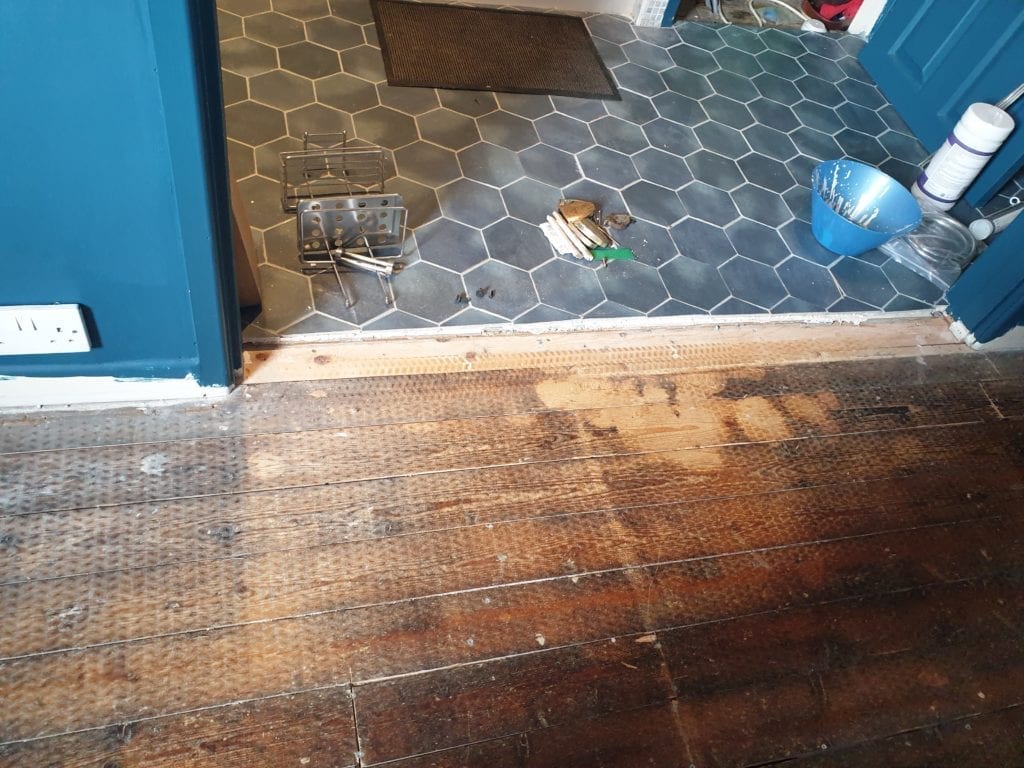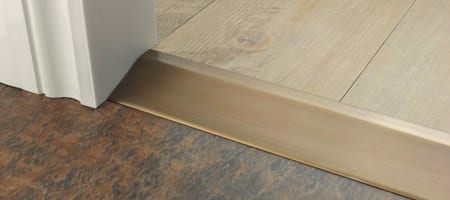A common problem is what to do where two floors meet and, for whatever reason, they are not level or flat with each other. How do you transition between different floor levels and bridge from one to the other without it looking a mess? Few people want a step, as they can be a trip hazard, visually unattractive and plain annoying.
Avoid ugly steps in doorways
Annoyance, frustration, disappointment…they all describe the emotions of customers who explain how, having had a lovely new bathroom installed they discovered an unwelcome step had been created by the builders, onto the landing. Similarly, the customers who go to work, leaving the fitters installing a lovely wooden floor in their house, only to return in the evening to find it sits 4mm higher than the tiled hall floor it joins onto.
Thankfully, there are some great specialist carpet door bars, which solve all these floor level problems AND look smart.

Step 1 – what type of floor-covering?
Determine the type of floorcoverings you wish to bridge e.g. carpet, laminate, LVT, concrete, rubber, ceramic tiles, carpet tiles and the like. Therefore, if you are joining a laminate floor down to a carpet, you could also describe this as transitioning from carpet to hard flooring. Alternatively, if you are joining wood to ceramic tiles, you would be joining hard to hard floorcoverings.
Terminology: a “hard” floorcovering refers to most floor types which are not carpet, such as ceramic tiles, wood, LVT, laminate. They feel pretty solid and rigid when you touch them and these characteristics influence the type of transition door bar you will need.
Step 2 – determine height difference
Measure the height difference between the two finished floor levels. The easiest way is to mark a piece of paper and then measure it in millimetres, precisely.
Tip: When a carpet is involved, it is best to lightly compress the pile and then measure, to replicate how a door threshold typically compresses the pile and so avoids an obvious edge.
Step 3 – choose appropriate design
Choose the product option that best suits your installation from the height compensating profiles and solutions listed below, which are all sold from CarpetRunners’ online shop. To make it easy, click on the product to see full product details and diagrams on each of the product pages, plus pictures of all the attractive finishes available. Scroll down each page for full details.
| Product options | Floor level height difference | Suitable for flooring types | Choice of finishes | Choice of lengths | Special design features |
| Premier Posh | 0-8mm | All | 10 | 3 | Inlay hides fixing screws |
| Premier Cover | 0-8mm | All | 10 | 3 | Visible, matching screws |
| Premier Single 9, 4 or 13 | 4-13mm | Carpet down to floor-boards or thin vinyl | 10 | 3 | Curved edge |
| Premier 2 Way Ramp | 2-9mm | Both hard flooring | 10 | 3 | Solid bar, self -adhesive |
| Premier Ramp | 10-20mm | Both hard flooring | 10 | Solid bar, self -adhesive | |
| Premier Compres-ion Ramp | 5mm | Carpet to hard flooring | 10 | 3 | Solid bar, self -adhesive |
| Ali Tramline Reducer | 2-9mm | Both LVT | 10 | 1 | Inlay LVT to match floor |
| Easyshim | 6-15mm | Slides in under carpet & underlay | n/a | n/a | Hidden beneath underlay |
Step 4 – shop online
Place your order and we will direct ship to your home or work address, typically within 4-5 workings days.


 0330 113 4909
0330 113 4909